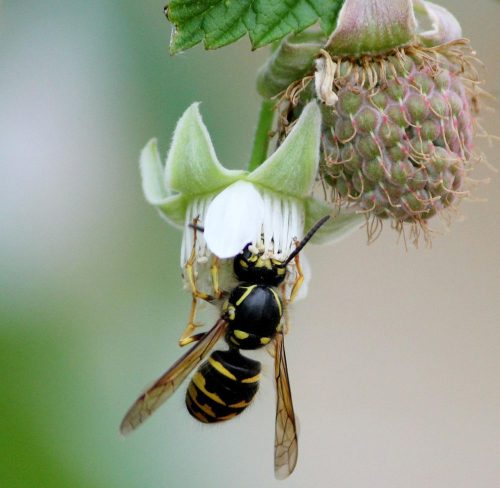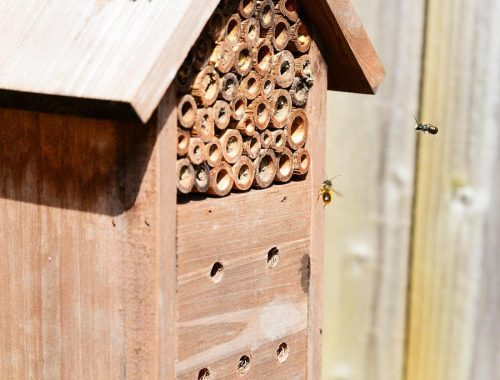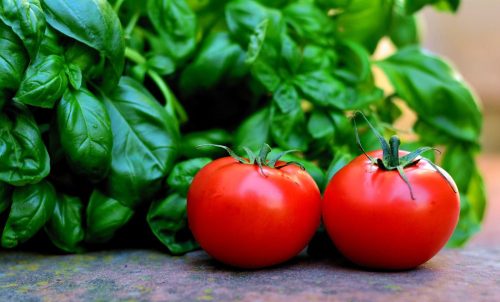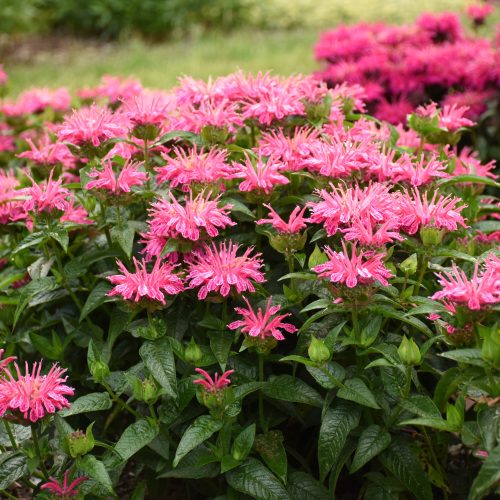If you’ve grown your own fruits and vegetables for long, you’ve probably noticed that some years are better than others when it comes to dealing with insects, crop quality and yields. Why is that? Some factors are beyond your control like how much and how often it rains, late spring freezes, the number of sunny v. cloudy days, and unusually large insect hatches. But there are many things you can do to swing the odds of a plentiful harvest in your favor. We’ll look at a number of helpful tips and techniques here and point you to some great sources of further information.

Pollinators Can Make or Break a Harvest
A primary reason why so many people—especially farmers—are concerned about dwindling bee and butterfly populations is that one in every three bites of food we eat requires a pollinator to produce it. A whopping 90% of the world’s flowering plants require bees to be able to reproduce and produce seeds or fruit. If you’re thinking you don’t like to eat fruits and vegetables anyway, consider that agricultural feed crops like alfalfa and clover that are used to feed cows, pigs and chickens also require pollinators to produce seed and reproduce.
If you grow any of the following items in your garden, you’ll need to draw in bees to produce or improve the yield: tomato, pepper, strawberry, eggplant, cucumber, squash, zucchini, pumpkin, beans, watermelon, muskmelon, raspberries, blackberries, blueberries, apples, cherries and peaches. Notice that these are all plants that produce a fruit, berry or vegetable.
Plants that we eat for their leaves, roots or undeveloped flowers do not require pollinating bees. They include things like leafy greens, herbs, cabbage, broccoli, cauliflower, kale, and root crops like potatoes, carrots, onions, garlic, radishes and beets.

Foster a Safe Place for Pollinators
Given the lengthy list of desirable fruits and vegetables that require pollinators to produce a yield, you’ll need to devise a plan to draw bees and butterflies in if you are growing these plants in your garden. Here are a few tips for fostering a safe habitat for pollinators:
- Grow companion plants nearby which produce flowers that feed pollinators and/or attract beneficial insects. We’ll give you lots of ideas for that below.
- Leave some parts of your property undeveloped so that ground and cavity nesting bees will have an undisturbed habitat to live and multiply. Place mason bee houses and pollinator “hotels” around your garden.
- Garden organically as much as possible. Never spray insecticides on flowering plants when they are blooming since many of these chemicals can harm pollinators. If a pesticide is absolutely necessary, choose one that has the least toxicity to pollinators. Use natural products like compost and humus, and organic amendments like Espoma® products, around your edible plants.
Use Companion Planting Techniques
Companion planting is an ancient practice that has worked for generations of people who have grown their own food. The most famed example is the Three Sisters planting method of planting corn, beans and squash together. The corn provides a support for the beans to climb while the large leaves of the squash plants shade out the weeds and keep the soil cool and moist. Beans are legumes, so they naturally fix Nitrogen in the soil which helps the corn and squash grow big and strong.

Companion Planting Tricks to Try
Basil and tomatoes aren’t just good companions on your dinner plate—they are also good planting companions in the garden. Basil is thought to improve the flavor and growth of tomatoes, peppers and lettuces, while its strong scent deters pests such as thrips, armyworms and the moths that lay the eggs of tomato hornworms. Planting Portulaca at the feet of your basil will help to shade its roots and keep the soil cool and moist. This benefits the basil and draws pollinators in to help with tomato pollination.
Sunflowers pair well with cucumbers and beans. They draw in beneficial insects beginning when they are still very small plants and continue to benefit your garden all the way through their life cycle. Plant a row of traditional tall sunflowers around the perimeter of your vegetable garden, or plant dwarf sunflowers like Suncredible® varieties in among your tomatoes, kale or cabbages.
Plant Calendula in among your root vegetables. It is known to attract tiny parasitizing wasps and ward off root nematodes and some types of beetles. Petunias may also deter asparagus beetles.
Growing chives and garlic near carrots is thought to improve their growth and flavor. These pungent herbs can also repel aphids, mites, flies, ermine moths and Japanese beetles. Other strongly scented herbs like parsley, mint and dill attract and may play host to beneficial insects and butterflies while repelling insect pests at the same time.
Sweet alyssum, zinnias and ageratum will draw in pollinators to increase your tomato, bean and squash yields. Alyssum also draws in green lacewings which eat the aphids that prey on these crops.
Find many more companion planting ideas from The Old Farmer’s Almanac.
A helpful book on this topic is Attracting Beneficial Bugs to Your Garden by Jessica Walliser.

Plant Ornamental Herbs Around Your Garden
Not all herbs are sold in the herb section at the garden center. Many of the popular perennials we grow in our gardens are actually herbs that have been developed for their ornamental characteristics. You’ll notice that most have foliage or flowers with an easily recognizable scent.
A few of the most popular ornamental herbs include:
Ornamental herbs like those listed here aren’t typically grown to harvest and eat, but they make excellent companions for planting near or even within your vegetable garden. Their showy flowers are highly attractive to pollinating bees and butterflies. They’ll draw in pollinators which will, in turn, pollinate your squash, raspberries, and other food crops. Plant several different kinds of ornamental herbs that bloom throughout the growing season to coincide with the flowering times of your edible crops that you sow in spring, summer and early fall.
Want to learn more about growing a successful fruit and vegetable garden? Find 20 more tips in this article.
